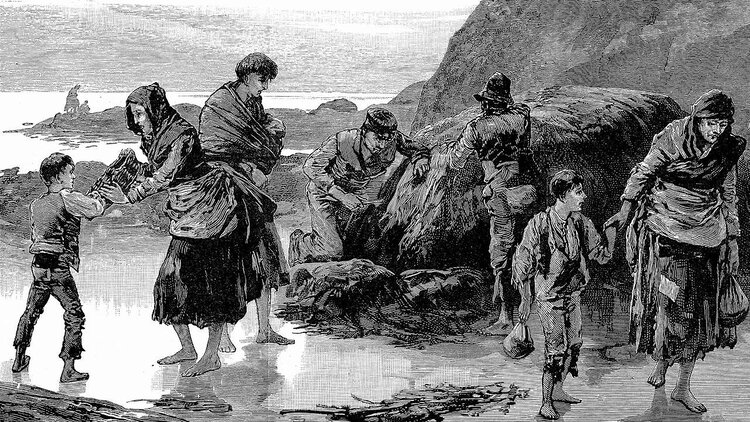On the one hand, the Great Hunger in Ireland and the Dust Bowl in the United States would seem to have little in common. On the other hand, well … you’d be wrong.
True, The Great Hunger, or An Gorta Mór, in the 1840s—commonly known as the potato famine, but it was more complicated than that—resulted in the death by starvation of a million Irish people, and the emigration of a million more. The Dust Bowl of the 1930s, while incredibly tragic, resulted in the deaths of comparatively few—roughly 7,000—but also resulted in new migration patterns amounting in the tens of thousands of Americans, many of them to California, and unparalleled poverty.
But it’s not as simple as that, says Bill McCray, volunteer with a background in training and development and facilitator of a new two-week virtual Irish Diaspora Center study group called “The History of An Gorta Mór and the Dust Bowl.”
The group meets by Zoom Tuesday, July 28, at 7 p.m. and Tuesday, August 4, at 8:30 p.m.
The new group is an outgrowth of discussions by the Irish Diaspora Center staff to shift programming from in-person at the center’s Havertown location to virtual programming as a consequence of the Covid-19 pandemic.
“As it went on, we started thinking about other things we could do to get people’s attention and to maintain that sense of community,” says McCray. “We thought, ‘What if we did some things that touch both sides of the ocean and compare and contrast? Families would work on it together and learn more about their history, and then have a conversation about it.’”
McCray suggested the Great Hunger-Dust Bowl study group.
“In terms of scale, The Great Hunger had a more tragic outcome, but both changed their countries in many ways,” says McCray. “The Great Hunger had the effect of making the country much younger and over time that contributed to the revival that they had in the ‘90s. It’s interesting how tragedy can sometimes result in something that’s more positive. A lot of literature, culture and music were also inspired by both events. ‘Grapes of Wrath,’ for example, was inspired by the Dust Bowl—it’s one of my favorite books. There are just so many parallels between the two. We’ll compare and contrast what the effects of both were, and still are.”
In regard to the Dust Bowl, the conversation will focus on politics and the economy at the time of the Dust Bowl, poverty and forced migration, how politics and the economy evolved as a result, and the impact on our culture.
Discussions on The Great Hunger will focus on conditions in Ireland at the time, responses to address the failure of the potato crop and alleviate its impact, how the loss of 2 million people affected daily life, how politics and economics evolved in response, and how arts and culture were affected.
For those who register—the program is limited to 20—McCray says he’s hoping the conversation will center around how both tragedies affected families long-term. For example, descendants of Dust Bowl families—also victims of the Great Depression—often learned to be conservative with money. “There may be parallels,” McCray says, “with people whose families came across during The Great Hunger. The capstone question will be, how do those events continue to affect life in Ireland and here. We’ll talk about who left Ireland, who came to the United States, and who stayed.”
Study group registrants will be given suggested readings, and from that the discussions will ensue.
The program appeals to McCray because of his background. “It gives me a chance to do something I think I’m good at, about subjects I’m very passionate about.”
And for the participants? “Hopefully, we’ll get people enthused and want to do more.”
For details, check out: https://www.icphila.org/virtual-programs/2020/7/28/the-history-of-an-gorta-mor-and-the-dust-bowl-study-group
The registration deadline is Monday, July 13.

